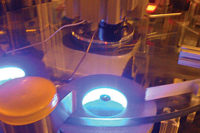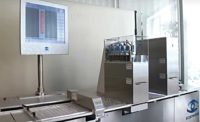The right tools are always essential to properly perform repair work. That was the lesson Timothy S. Leatherman learned in 1975 while trying to use a pocketknife to fix leaky plumbing in the hotel where he and his wife were staying while on vacation.
A 1970 mechanical engineering graduate of Oregon State University, Leatherman decided to try and fix the plumbing by using pliers joined to a Boy Scout knife. When his attempt proved successful, he saw the market potential for a portable multifunction hand tool. Over the next several years, Leatherman refined his invention. He developed a patented prototype (called Mr. Crunch) in 1980, and brought the Pocket Survival Tool (PST) to market in 1983.
That same year, he and business partner Steve Berliner formed Leatherman Tool Group Inc. in Portland, OR, and began selling the PST through mail-order catalogs. More than 30 years later, the company is one of the world’s leading manufacturers of multi-tools—and continues to assemble them at its Portland plant with a production rate of about 17,000 tools per week.
Leatherman multi-tools feature a pair of pliers with up to 20 tools stored in the handles. These tools include screwdrivers, knives, saws, wire cutters, files, a bottle opener and many other useful items. Multi-tool customers range from medical professionals and military personnel, to outdoors people and homeowners needing to complete a DIY weekend project. Some of the company’s products are small enough (0.81 ounce) to fit on a keychain.
Because Leatherman lacks a foundry, it creates most of its own steel parts by blanking, machining and heat-treating steel rolls. For many years, first-article inspection of these parts was performed using either a micrometer or a coordinate measuring machine. Recently, however, the company began using three IM series dimensional vision systems from Keyence Corp. of America.
According to David Knight, gauge technician for Leatherman, the systems enable workers to accurately inspect batches of parts in minutes or hours rather than days or weeks. Equally important, the systems improve quality by ensuring that all parts meet company specified tolerances, which are essential for proper multi-tool assembly and function.
“Our tolerances are tight, most commonly between ±0.001 and ±0.003 inch,” explains Knight. “Hole position tolerances are especially important.”
Part inspection begins with the operator placing it anywhere on the system’s stage. After he presses the start button, the system locates and orients the part, takes a photo of the entire part and quickly measures up to 99 of its features. The whole process takes just a few seconds, with repeatability of ±1 micron.
“It’s a big time saver knowing that there’s no chance of operator error and everybody’s going to get the same measure-ments,” says Knight. “The system provides peace of mind.”
Training Leatherman personnel to program and use the IM systems is also easy. Knight says operators can be trained in just a few minutes, enabling them to check parts rather than bringing parts to the quality department for evaluation.
For more information on dimensional vision inspection systems, call 888-539-3623 or visit www.keyence.com/lmim.




